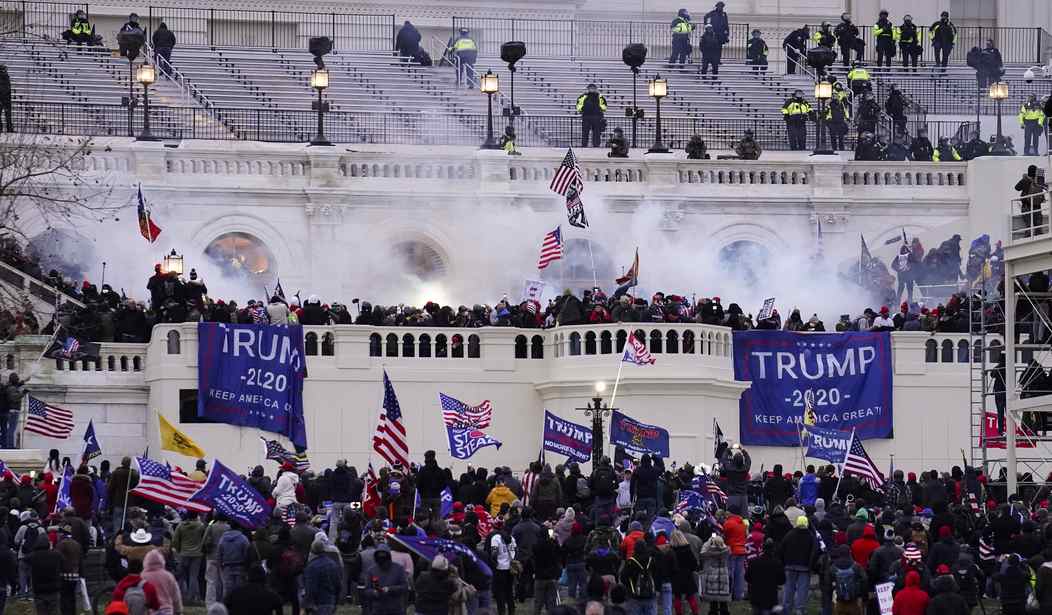So far, the Justice Department has charged more than 450 people with taking part in the Jan. 6 Capitol riot. You hear a lot about the cases of those accused of violent acts or conspiring to take part in an "insurrection." But recently, we saw the resolution of a much more pedestrian case, one that is likely representative of the rioters who ended up inside the Capitol, but did not take part in any violence.
On June 22, a 28-year-old Tennessee man, Bryan Wayne Ivey, pleaded guilty to his role in the riot. The charge he pleaded guilty to, "Parading, Demonstrating or Picketing in a Capitol Building," is a misdemeanor that carries a maximum sentence of six months in jail and a $500 fine.
Ivey was originally charged with four crimes. The first was "Entering and Remaining in a Restricted Building or Grounds." The second was "Disorderly and Disruptive Conduct in a Restricted Building or Grounds." The third was "Disorderly Conduct in a Capitol Building." And the final charge, the one to which he pleaded guilty, was the "Parading" charge.
In court papers, prosecutors said they learned about Ivey's presence in the Capitol from a "concerned citizen" who identified Ivey as the man in a photo of another rioter -- Proud Boys member Dominic Pezzola -- who smashed a window in order to enter the Capitol. Prosecutors identified Ivey in a bunch of other videos and photos of the rioters inside the Capitol. The photos included in the affidavit supporting the charges show Ivey standing around taking selfies and photos of people in the building. It appears that was Ivey's main activity during the riot.
In his plea, Ivey admitted that he knew at the time he was not supposed to be in the Capitol under such circumstances; the public does not enter through broken windows. In return for his guilty plea to the "Parading" charge, the Justice Department dropped the three other charges against him. Ivey has been free while his case has been adjudicated; it is likely, although not guaranteed, that he will be sentenced to probation with no jail time.
Recommended
Why is this particular case important? It doesn't really tell us anything about the leadership or the worst actors in the Capitol riot. Rather, it tells us about a lot of the other people who ended up in the Capitol that day. In early March, FBI Director Christopher Wray told the Senate that he divided people involved in the events of Jan. 6 into three categories. "The first group -- the largest group, the group that we need to spend the least time talking about -- is peaceful, maybe rowdy, protesters, but who weren't violating the law," Wray said. And then:
"Then there's the second group -- think of a reverse pyramid -- a second group that is people who may have come intending to just be part of a peaceful protest, but either got swept up in -- in the motive, or emotion, or whatever, engaged in kind of low-level criminal behavior. Trespass, say, on the Capitol grounds, but not breaching the building. [It's] still criminal conduct, still needs to be addressed, but more on the fly, in the moment, opportunistic.
"The third group -- the smallest group numerically, but by far and away the most serious group -- are those who breached the Capitol grounds and engaged in violence against law enforcement, who attempted to disrupt the members of Congress and the conduct of their constitutional responsibilities. And of those, some of those people clearly came to Washington, we now know, with plans and intentions to engage in the worst kind of violence we would consider domestic terrorism. And so, some of that coordination appears to have been coordinated travel, coordinated meeting up, coordinated in terms of what kind of gear they might be wearing or bringing with them, that kind of thing."
It appears Bryan Wayne Ivey was one of those who, as Wray said, got "swept up" in events. He actually entered the Capitol, where he milled around for about half an hour before leaving. It does not appear he was trying to overthrow the United States government. It does not appear he was trying to destroy the Constitution. It does not appear he was bent on insurrection. He was taking selfies, and then he left. And that is one of the more prosaic -- and likely common -- stories of the Capitol riot.
This content originally appeared on the Washington Examiner at washingtonexaminer.com/opinion/byron-yorks-daily-memo-a-run-of-the-mill-capitol-riot-can.
Byron York is chief political correspondent for The Washington Examiner.

























Join the conversation as a VIP Member